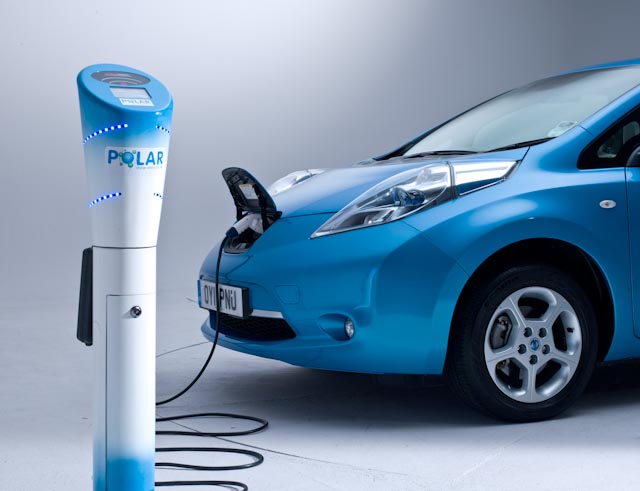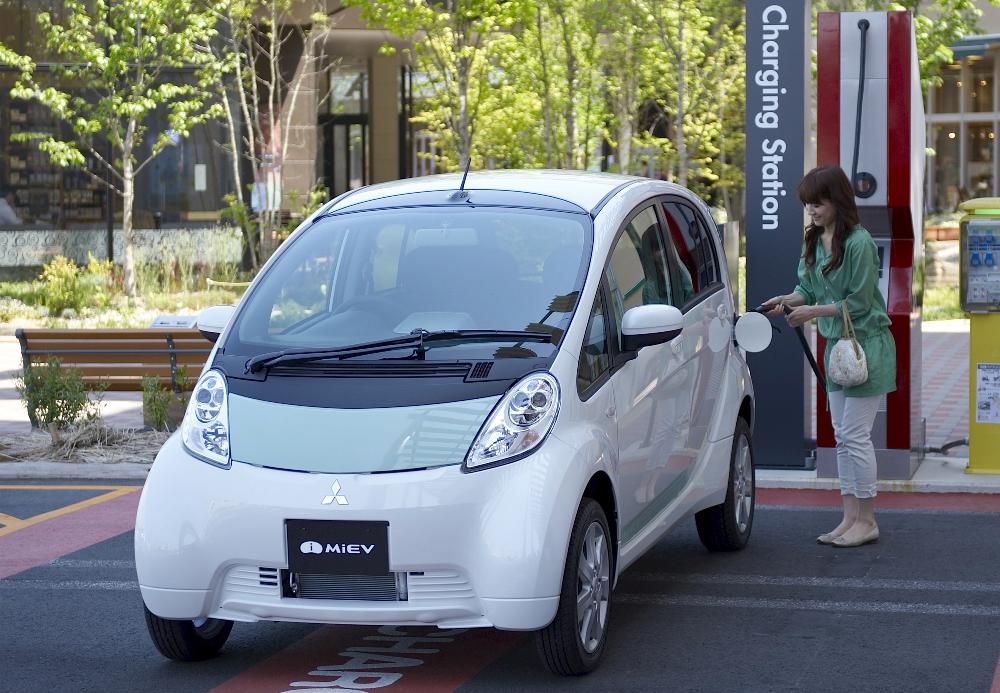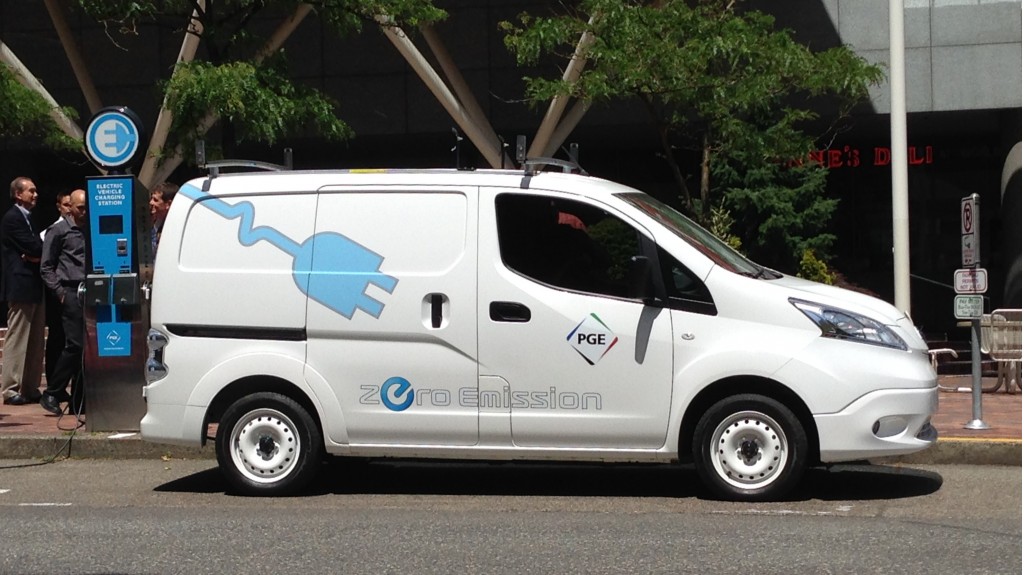
Polar Charging Post and Nissan Leaf
The average car spends about 95 percent of a 24-hour day parked.
For the 5 percent that they're driven, they actually spend one-third of the time idling–at red lights, stuck behind leisurely left-turners, or even while the driver waits for the vehicle to warm up (or cool down) before getting in.
In other words, private automobiles spend only 3 percent of their time actually mobile.

Mitsubishi i-MiEV electric car at quick charging station
Give up gas, keep the cash
But in the longer run--starting, oh, today--a new study concludes that volume battery-electric vehicles at the low end of today's price range would save fleet operators an average of $16,000 apiece, compared to the vehicles they'd be replacing, over a service life of seven years.
That projection comes from a British Columbia, Canada, study of fleet vehicles, which suggests that pure battery-electric vehicles--at least, the ones not named Tesla--had enough range today to handle 94 percent of the fleet routes evaluated in the study.
To be fair, the study comes with two small caveats.
The first is that different incentive levels change the realized savings. British Columbia's rebates topped out at $5,000 during the study period, meaning that even in the absence of incentives (or a modest carbon tax on gasoline), fleet operators could expect to save more than $10,000 per electric vehicle.

Nissan e-NV200 - First Drive, June 2014
More vehicle types needed
The second caveat is that while today's electric vehicles might have the necessary range, they may not have had the required cargo space for some duties. As bigger vehicles arrive--the Nissan eNV200 electric commercial van is the first one to hit global markets--this will become less of an issue going forward.
The study was funded by British Columbia's Ministry of Environment as part of its Plug-in BC program, and evaluated the feasibility of plug-in hybrids and pure battery-electric vehicles for nine fleet operators around the province.
The fleet operators studied consisted of three municipalities, two universities, transit and harbor authorities, and a coffee company not named Starbucks.
Data loggers were fitted to 123 vehicles during the study, during which they collectively logged 55,000 km (34,000 miles).
Analyzing the fleet data
The data was analyzed by automotive modelling company FleetCarma, which ran simulations on the whole data set for each of eight plug-in electric cars:

Ford Fusion Energi charging.
- 4 plug-in hybrids (Ford C-Max Energi, Ford Fusion Energi, Chevy Volt, and Toyota Prius Plug-in Hybrid)
- 4 battery-electric vehicles (Nissan Leaf, Mitsubishi i-MiEV, Smart Electric Drive, and Ford Focus EV)
Among those eight plug-ins, the simulation topped 400,000 km, or 10 trips around the earth. The breadth of data lends weight to the study's conclusions, which were:
- Battery-electric vehicles had enough range to fulfill the daily travel requirements–the duty cycle–of 94 percent of the fleet vehicles studied. Those routes never once exceeded the range limits of the electric cars. This is largely because...
- The battery-electric vehicles with the lowest Total-Cost-of-Ownership for each application would have fully recharged overnight 81 percent of the time, using a basic Level 2 (240-Volt, 30-amp) charging station
Consistent pattern
The findings of the Plug-in BC study are consistent with a one-year pilot study in the province of Ontario, where three electric cars were introduced into vehicle fleets and used alongside their gasoline counterparts.
Project EVAN showed that it would only take a few years for their total cost of ownership to undercut that of their gasoline counterparts.
Meanwhile, we have the start-stop system, which switches off the engine for up to two minutes while the car is stationary, cutting wasted fuel and emissions.
The relatively low cost of engineering start-stop solutions (and continuing pressure to reduce fuel consumption from now through 2025) explains the enthusiasm of the many automakers pursuing the technology, with Ford among the most aggressive.
When it comes to a sales pitch, though, it's hard to beat a phrase like, "Works on 94 percent of fleet routes; saves $16,000 to boot!"
_______________________________________________












